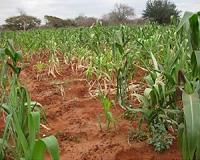 |
Davis CA (SPX) Mar 15, 2011 Mark Twain called it "the most delicious fruit known to man." But the cherimoya, or custard apple, and its close relations the sugar apple and soursop, also have lots of big, awkward seeds. Now new research by plant scientists in the United States and Spain could show how to make this and other fruits seedless. Going seedless could be a big step for the fruit, said Charles Gasser, professor of plant biology at UC Davis. "This could be the next banana - it would make it a lot more popular," Gasser said. Bananas in their natural state have up to a hundred seeds; all commercial varieties, of course, are seedless. A paper describing the work is published March 14 in the journal Proceedings of the National Academy of Sciences. Researchers Jose Hormaza, Maria Herrero and graduate student Jorge Lora at the Consejo Superior de Investigaciones Cienti?cas in Malaga and Zaragoza, Spain, studied the seedless variety of sugar apple. When they looked closely at the fruit, they noticed that the ovules, which would normally form seeds, lacked an outer coat. They looked similar to the ovules of a mutant of the lab plant Arabidopsis discovered by Gasser's lab at UC Davis in the late 1990s. In Arabidopsis, the defective plants do not make seeds or fruit. But the mutant sugar apple produces full-sized fruit with white, soft flesh without the large, hard seeds. The Spanish team contacted Gasser, and Lora came from Malaga to work on the project in Gasser's lab. He discovered that the same gene was responsible for uncoated ovules in both the Arabidopsis and sugar apple mutants. "This is the first characterization of a gene for seedlessness in any crop plant," Gasser said. Seedless varieties of commercial fruit crops are usually achieved by selective breeding and then propagated vegetatively, for example through cuttings. Discovery of this new gene could open the way to produce seedless varieties in sugar apple, cherimoya and perhaps other fruit crops. The discovery also sheds light on the evolution of flowering plants, Gasser said. Cherimoya and sugar apple belong to the magnolid family of plants, which branched off from the other flowering plants quite early in their evolution. "It's a link all the way back to the beginning of the angiosperms," Gasser said.
Share This Article With Planet Earth
Related Links University of California - Davis Farming Today - Suppliers and Technology
 Untapped Crop Data From Africa Predicts Corn Peril If Temperatures Rise
Untapped Crop Data From Africa Predicts Corn Peril If Temperatures RiseStanford CA (SPX) Mar 15, 2011 A hidden trove of historical crop yield data from Africa shows that corn - long believed to tolerate hot temperatures - is a likely victim of global warming. Stanford agricultural scientist David Lobell and researchers at the International Maize and Wheat Improvement Center (CIMMYT) report in the inaugural issue of Nature Climate Change next week that a clear negative effect of warming on ... read more |
|
| The content herein, unless otherwise known to be public domain, are Copyright 1995-2010 - SpaceDaily. AFP and UPI Wire Stories are copyright Agence France-Presse and United Press International. ESA Portal Reports are copyright European Space Agency. All NASA sourced material is public domain. Additional copyrights may apply in whole or part to other bona fide parties. Advertising does not imply endorsement,agreement or approval of any opinions, statements or information provided by SpaceDaily on any Web page published or hosted by SpaceDaily. Privacy Statement |